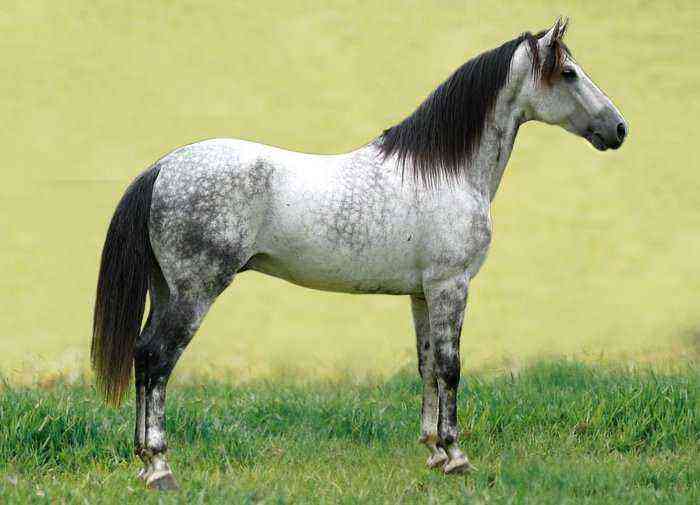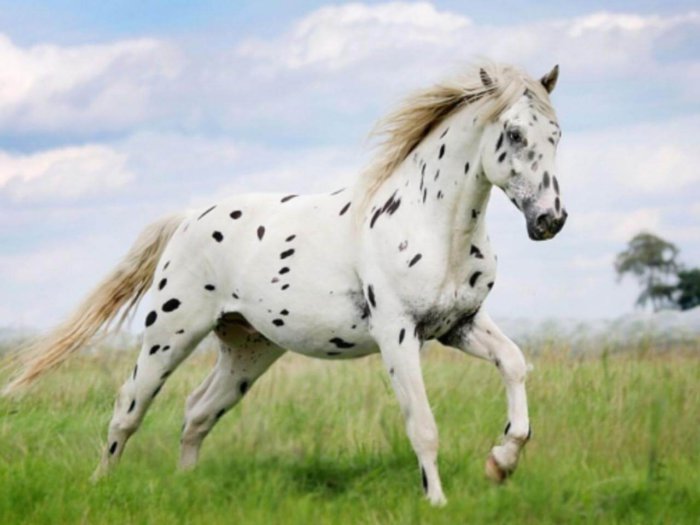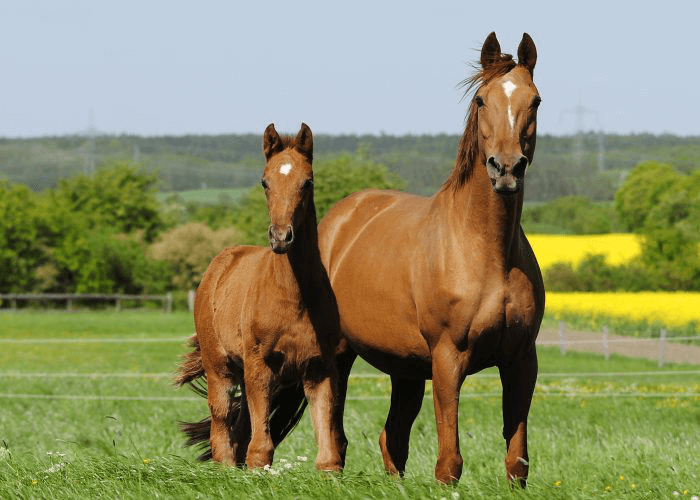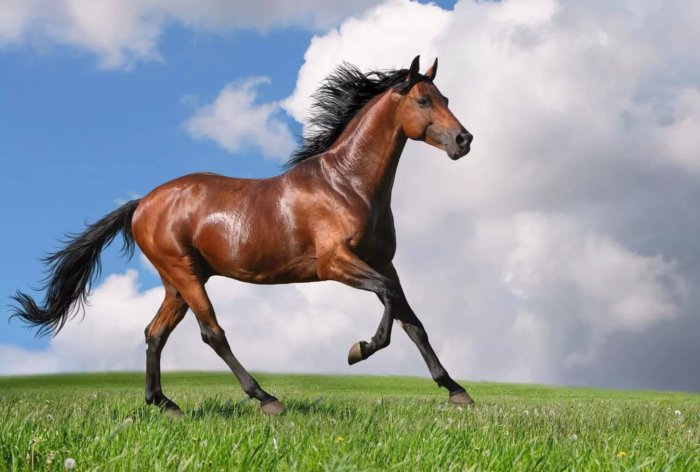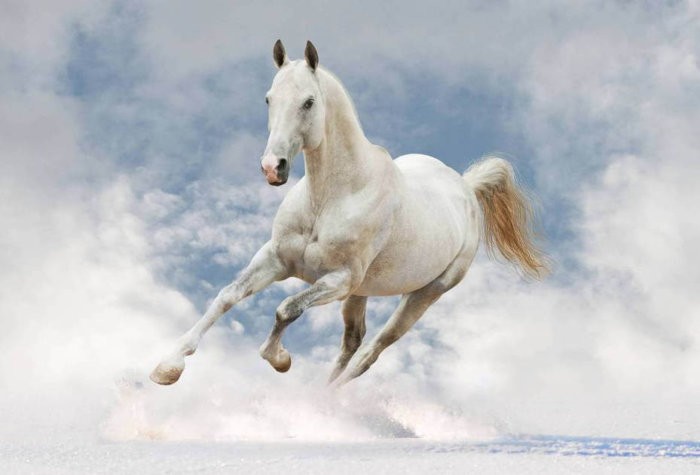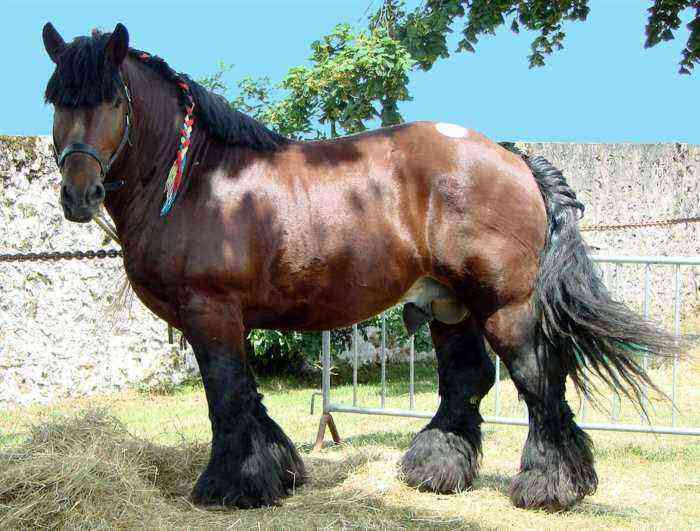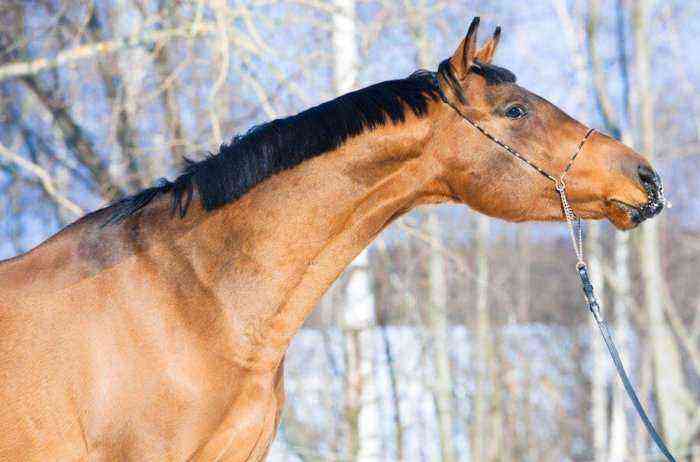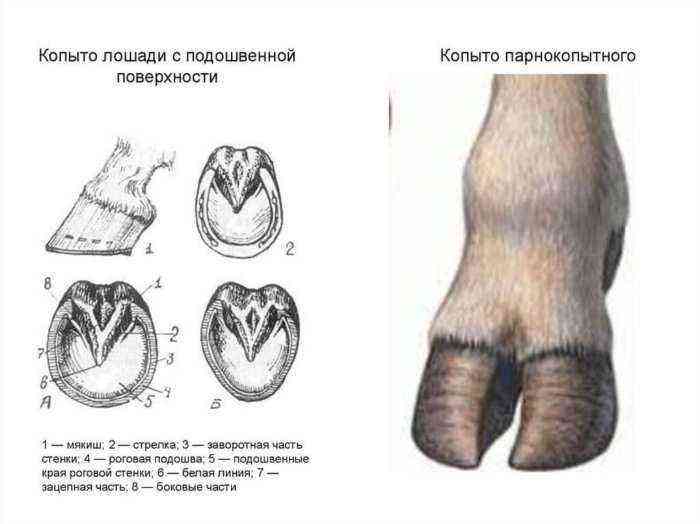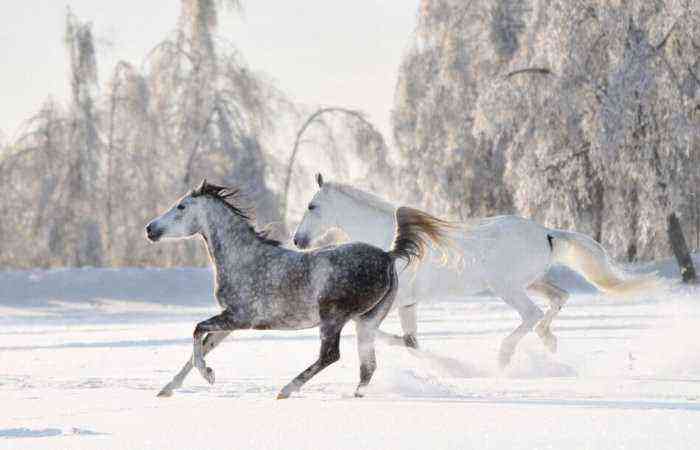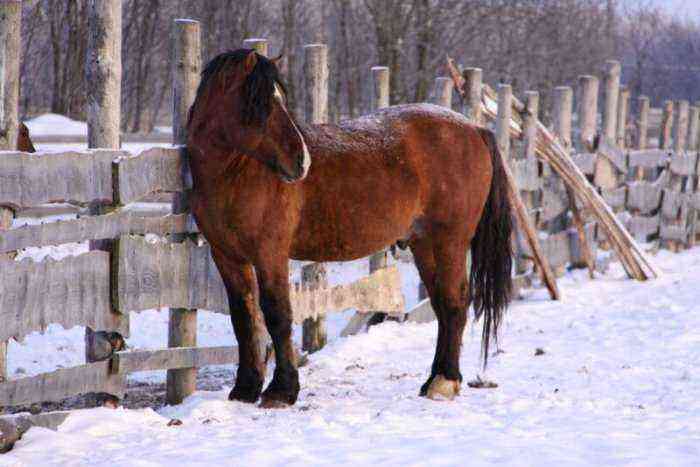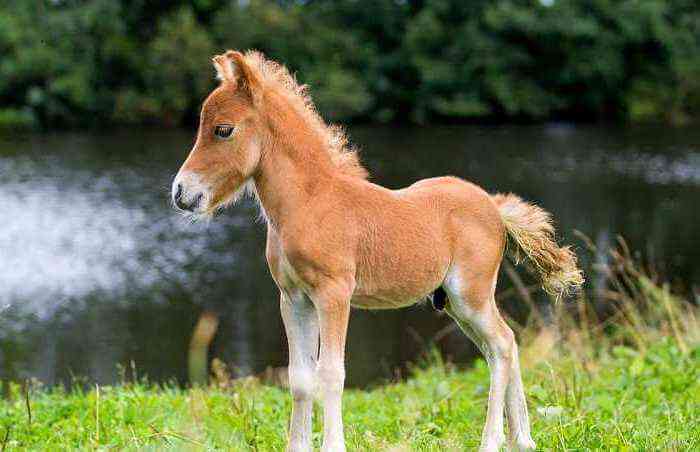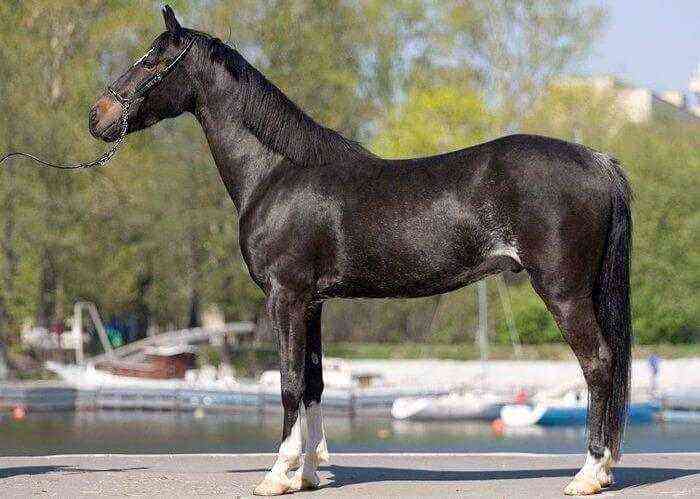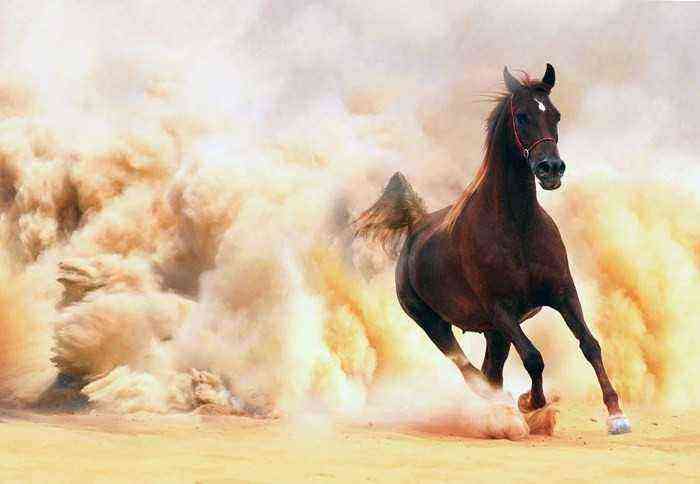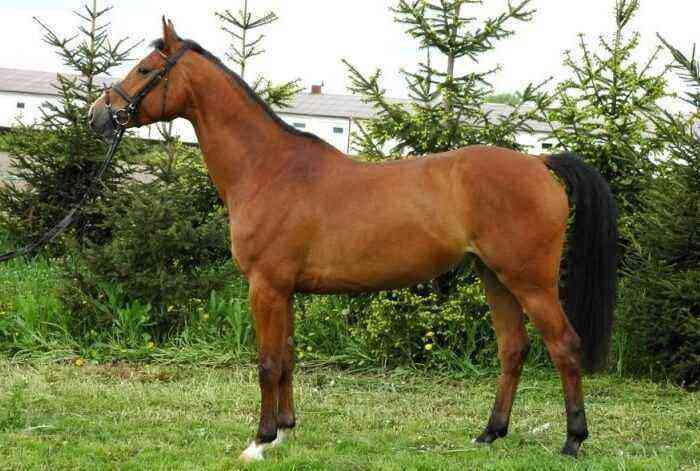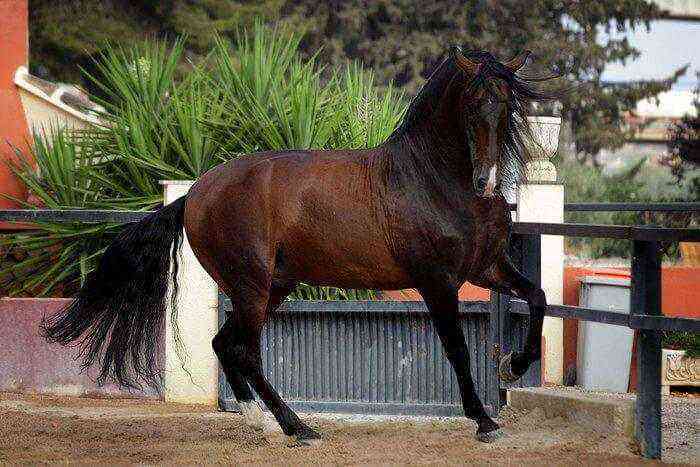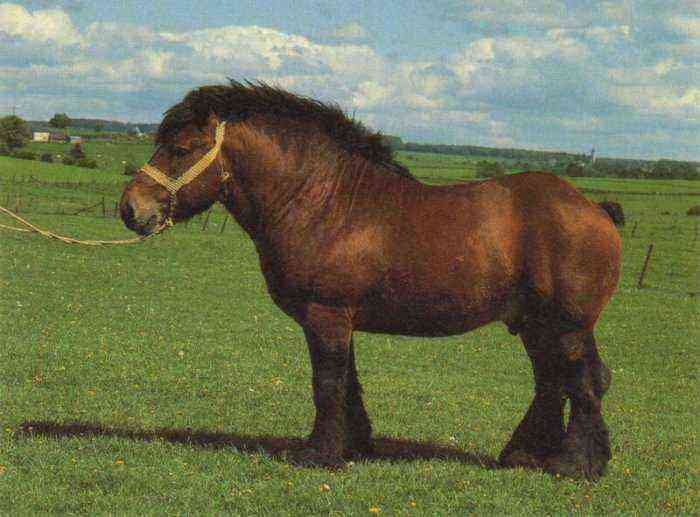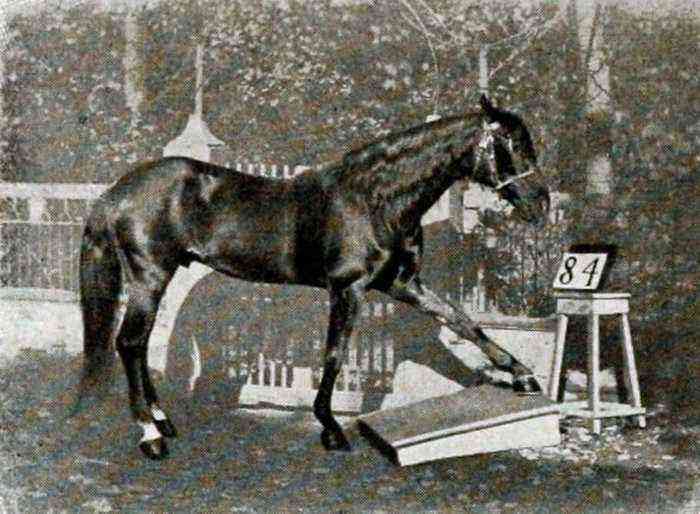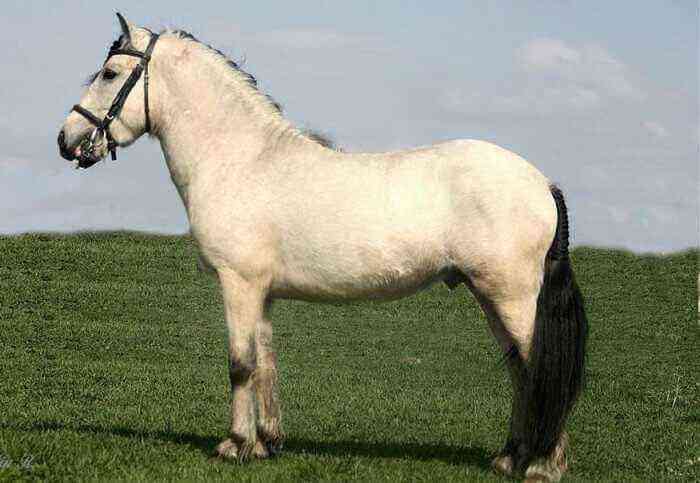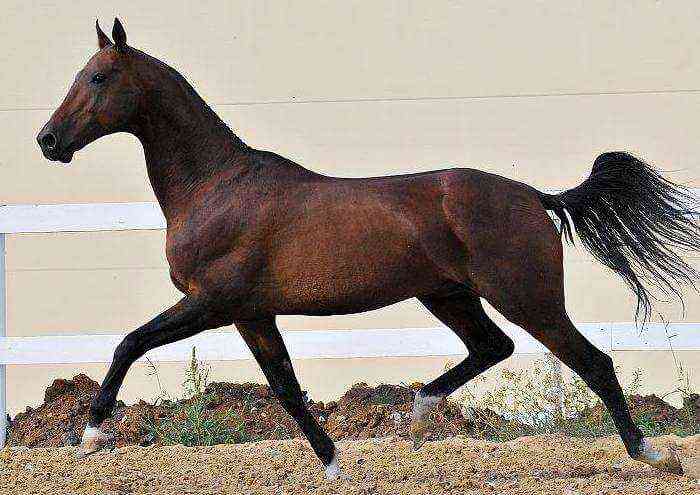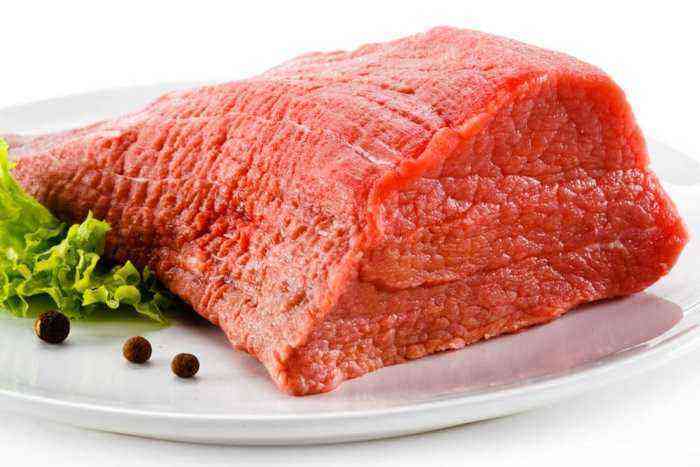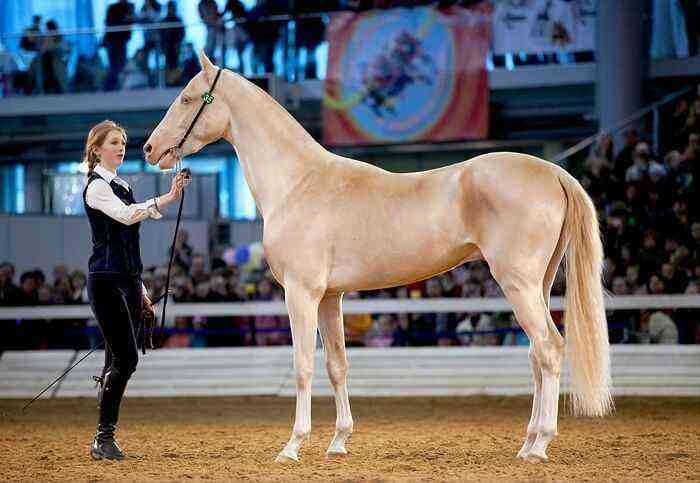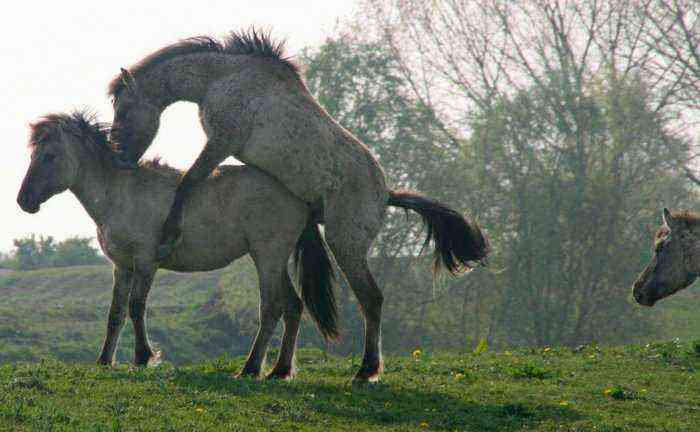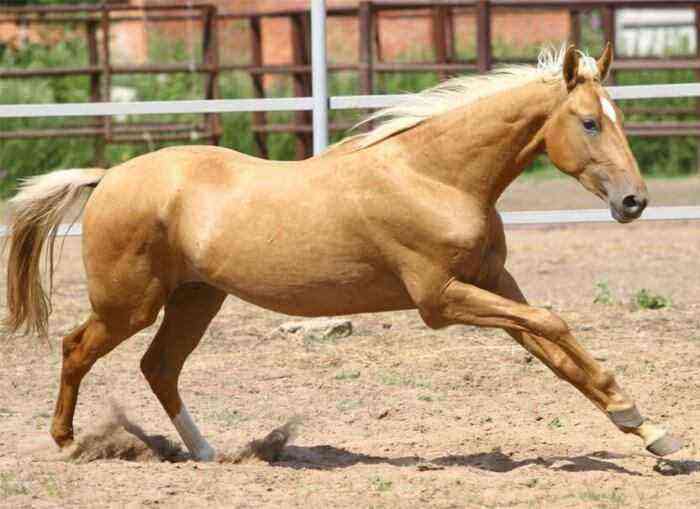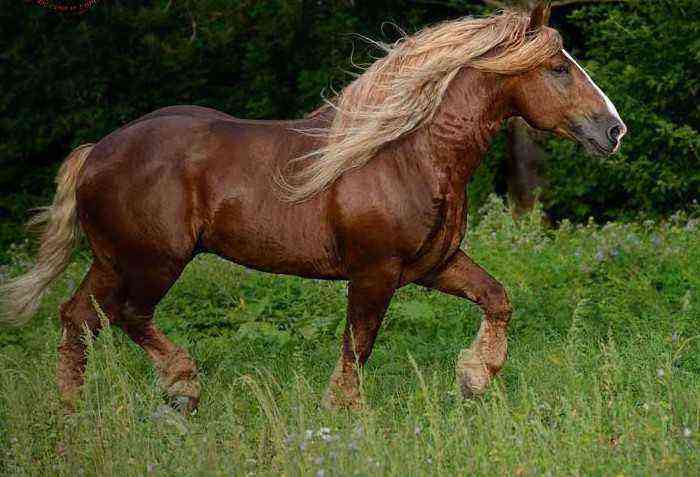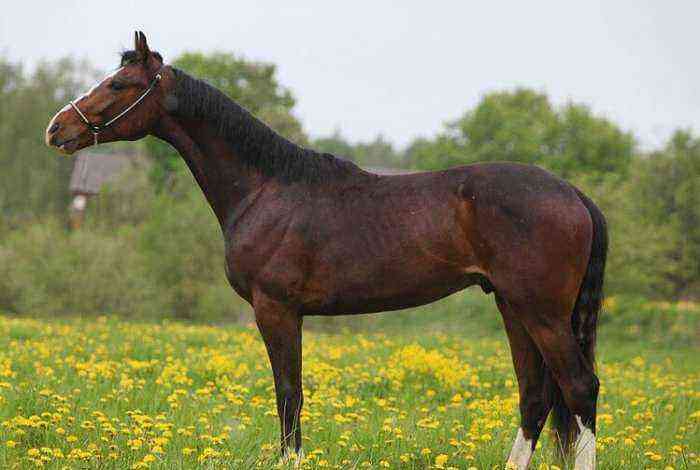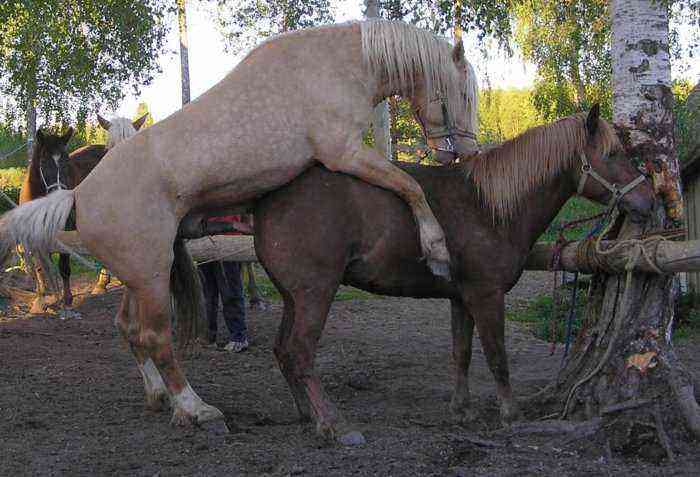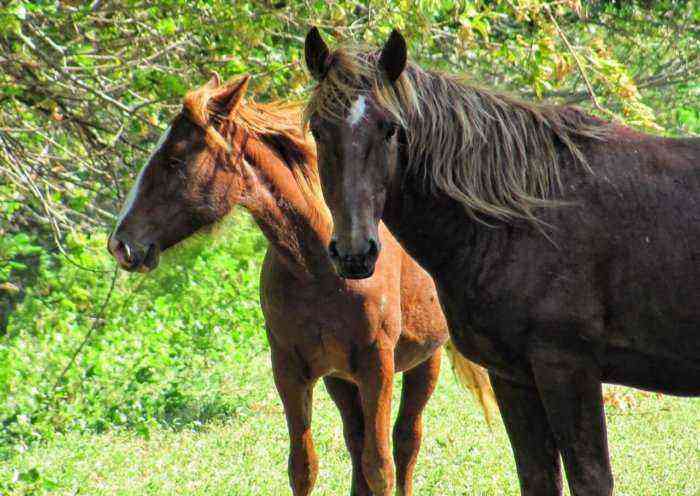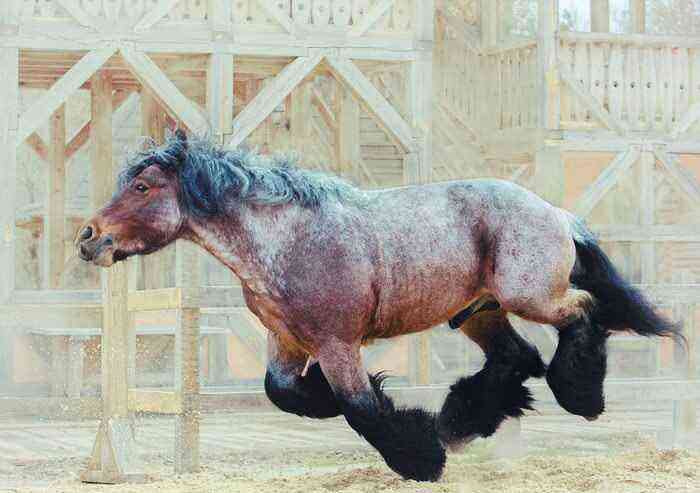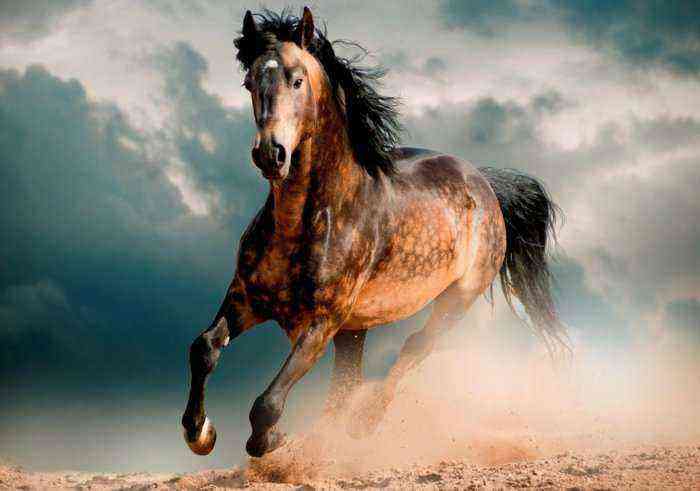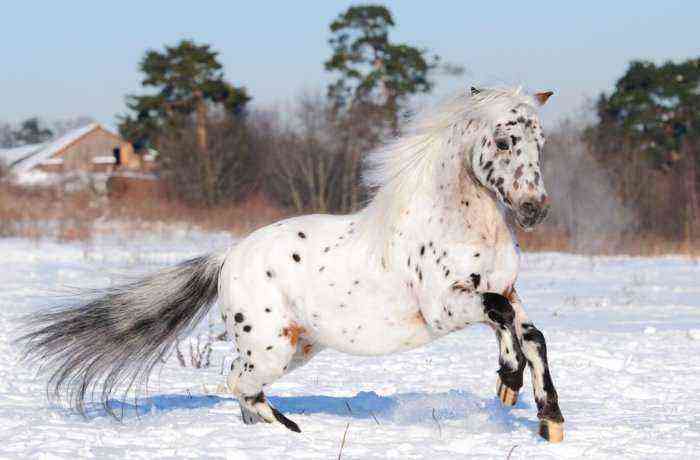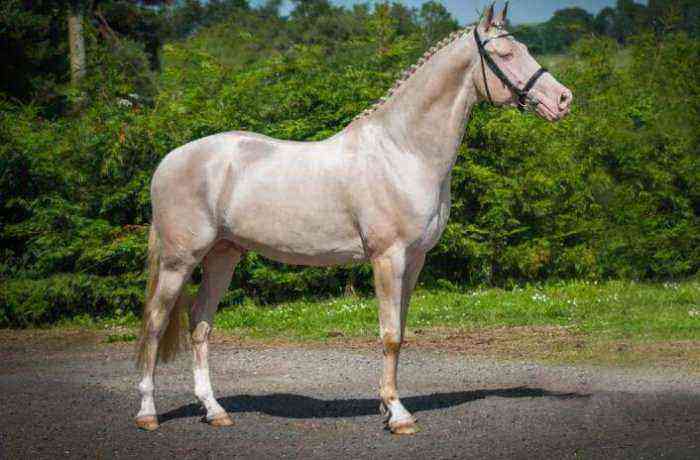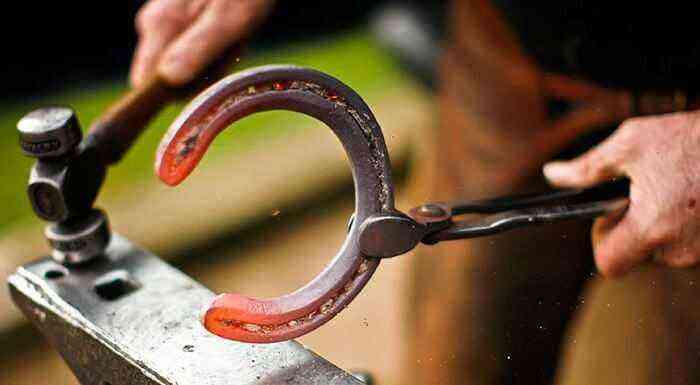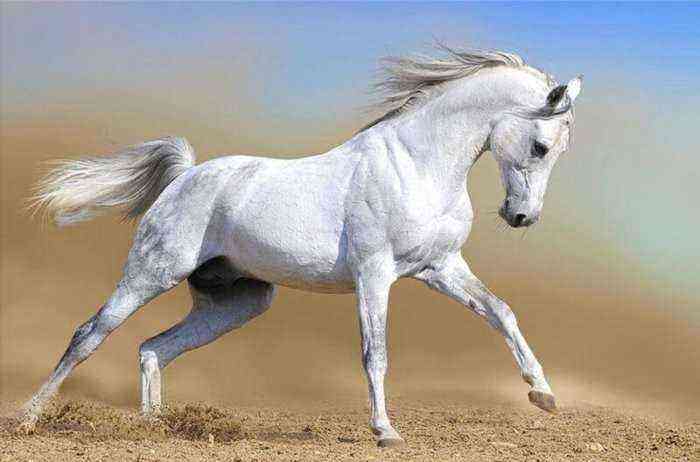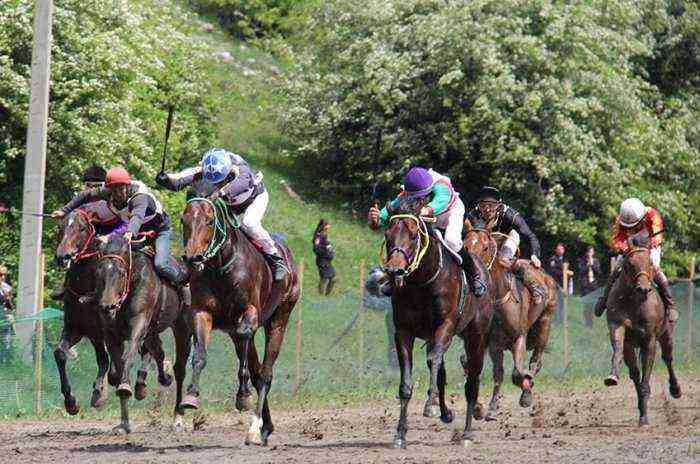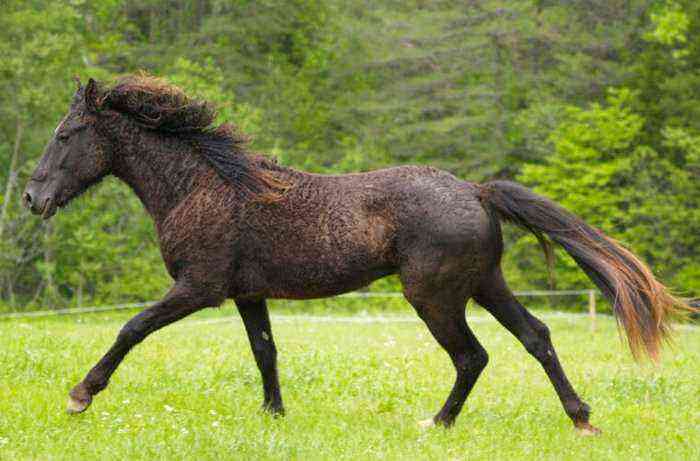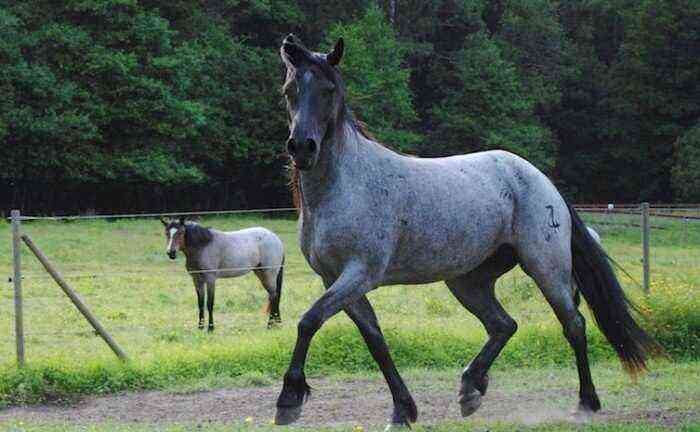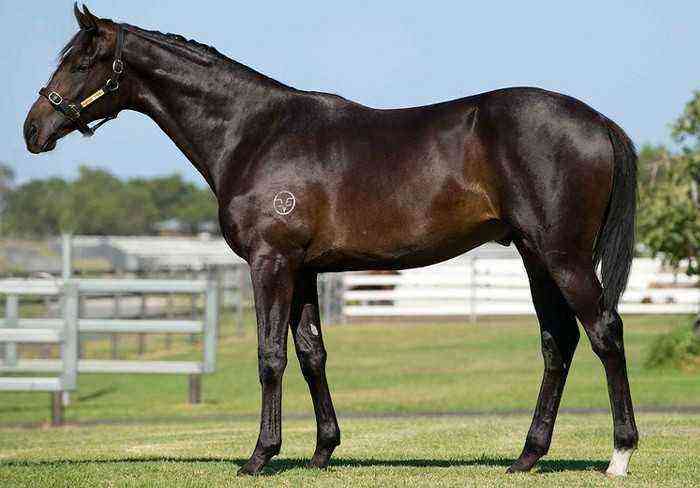The color of a horse is one of the most characteristic features of its exterior, as well as a clear sign indicating the breed of the animal. This concept includes not only the color of the coat, mane, tail, eyes, but also certain combinations of them. Moreover, many modern horse colors, including various combinations of colors and shades, appeared in the course of centuries-old human selection work. Initially, in the wild, these animals had only a few colors.
Horse suit
What is oil?
The specific color of the horse is a characteristic color, suggesting a combination of the color of the hairline of the body, mane and tail with the color of the skin and eyes of the animal. This characteristic within the pedigree line is inherited from one generation to another. Moreover, all the colors of horses suggest certain differences, fixed at the genetic level. So, when inheriting the red suit, the horse cannot show the black color of the legs. In the same way, representatives of the bay color never have white hair in the mane.
It should be noted that the color is fully formed only in adult horses. Foals are born with a certain distribution of pigments, which can change greatly during maturation. This usually happens by 6 months of age.
In ancient times, when horses were widely used in everyday life, their color was treated with special attention. It was believed that the coloring of the horse accurately indicates its physical qualities, character and susceptibility to certain diseases. For example, the ancient Arabs in everyday life had the following beliefs about the main colors of horses:
- gray horses suggest a delicate physique and are inferior to the rest in working capacity;
- black horses are born with a vicious and wayward character;
- animals with a red color are characterized by insufficient stamina and are not suitable for long journeys;
- horses with a completely white color were considered to have an extremely loose constitution, therefore they required special care from the owner;
- bays were valued above all, because, according to the breeders, they had an extremely high working capacity and an accommodating disposition.
Shades and shades
In addition to the general division of suits, each of them also involves several suits, which greatly expand the number of color options. Such excuses relate to a certain shade of the animal. So, a red suit can have a red-red color or almost sandy. Within the bay suit, light brown and almost black animals can also be included.
horse in a star
In addition to the shades of the main color, the masters are also divided on the basis of various markings. They are spots of various shapes and sizes that can appear on different parts of the animal’s body and usually stand out strongly against the background of the prevailing color. These spots are inherited and suggest specific forms:
- Go gray. It is characterized by the presence of a small amount of gray hairs, rarely scattered over the coat of the main color. There is gray hair not only on the head of the animal, but also on the back, in the groin, on the shoulders and sides.
- Star. In this case, light hairs are collected in a small round or rhombic spot, which can be located on the croup, head or side.
- Belt. A strip of dark hairs located along the ridge of living creatures.
- Zebroid. With such a mastery, the limbs of the animal are covered with dark stripes, like those of a zebra. Their number and size vary considerably. Zebroidity is manifested, as a rule, in native varieties, for which intrabreed development was characteristic.
Reference. There are other options for markings on the body of the animal. These include a kind of “bald spot” on the head, light socks, stockings or pants on the horse’s legs, dark specks on the croup and limbs. Also among the common excuses are tan and apples.
tan marks
Burn marks are characteristic of bay, as well as black and red colors. They are areas with lightened hairline. These spots are located around the eyes, mouth, nostrils, groin, buttocks and inner thighs of the animal. As a rule, such markings suggest yellow or a color similar to it. The only exceptions are brown tan marks on horses with a prevailing crow coloring.
Similar to the concept of “tanning” is the term “underarms”. Beneath it lies a whitish lightening of the coat, located at the bottom of the horse’s abdomen. As a rule, underlegs are found in animals of a bay color.
Apples
The phrase “horse in apples” has been heard by many. But not everyone knows that it also acts as a description of one of the tricks of the horses. This color suggests the presence of rounded spots of regular shape on the main color. Their color is usually white. Less common are completely white animals with black spots on the body. A special PMEL17 gene is responsible for the manifestation of this coloring and its inheritance by the younger generation.
Suit “horse in apples”
This trick is characteristic of various breeds. Especially often it manifests itself in horses of the rocky mountains. Of the domestic breeds, the most famous carriers of apples are the Oryol trotters.
Basic colors of horses
It should be noted that initially all the colors of horses were reduced to four main ones, which developed during the evolutionary process. All other colors obtained in the course of selection are considered to be derived from these main ones. Primary colors include:
- Raven.
- Redhead.
- Gray.
- I am nesting.
Black
Black horses look extremely impressive. Their coat is distinguished by a rich black color, which can be complemented by a pronounced shine that appears when sunlight hits the hairs. This brilliance is especially pronounced in Arabian and some oriental horses.
The black suit is characterized by a uniform black color, in which the head, the whole body and legs of the animal are painted. Hooves, mane, eyes and tail have the same color. Sometimes completely white spots appear on the coat. In combination with a dark background, they look extremely elegant and are fully allowed by the suit standards.
Within the color, three tricks also appear:
- Ash-black. She combines the main black hair color and chestnut tint. The same gene is responsible for it as in animals with isabella coloring.
- Crow in tan. This color is more seasonal. It manifests itself in summer, when the tips of the animal’s hairs fade under intense sunlight. Moreover, it is worth noting that only body hair is subject to this, and the mane and tail remain unchanged. In winter, the color returns to normal.
- Silver-black. Assumes the presence of a silvery mane and tail against a black body.
The black coloring is characteristic of the Dutch Frisians. Often it manifests itself in the Kabardian, Kladrub breed, Percheron. Often black horses can be found among the Oryol trotters.
Redhead
In rufous-coloured animals, the body, neck, head, and limbs suggest the same color. The hair of the mane and tail may differ by a couple of tones. As the seasons change, the mane hair may lighten.
Red color is represented by a wide range of shades. They range from light apricot to dark chestnut-like in color. Also popular is the brown saturated color of the horse, which, although outwardly similar to the dark colors of the bay, is still classified as red.
Red Hanoverian horse
There is such a suit in a variety of breeds, but most often manifested in the following:
- Hanoverian;
- Budennovskaya;
- thoroughbred;
- Don;
- Soviet and Russian heavy trucks.
Quite often, this color can be traced in the Kazakh steppe breed lines.
Grey
In animals with this color, a combination of white and gray hairs can be traced on the body. In this case, the specific excuse depends on which hair there is more in the wool. In addition, the gray color of the horse is also characterized by the fact that over time such a hairline often turns gray even more, which makes the animal seem almost white. The skin of animals with a gray color is usually dark, but sometimes depigmentation occurs in parallel with the graying of the hairline, during which it becomes pink.
It is worth noting that many Western researchers do not single out a gray suit at all. They claim that it appears against the background of other suits. The reason for this is the early graying of the horse, which causes a special gene in the body, called the letter “G”.
Within the gray suit there are several different options:
- Mousey. It is represented by a combination of a dark mane with an ashy color of the body, neck and head.
- Gray in apples. The body, croup and limbs of the animal are painted in light gray, against which light spots stand out with a diameter of 5 cm.
- Red-gray. The hairline combines white and brown hairs, as a result of which the overall color looks gray with a pronounced reddish tint.
- Trout. In this color, on a light gray background, red round spots, the size of a pea, are scattered all over the body.
A characteristic gray color is considered for Oryol trotters, Arabian horses, Lippitan horses. Also, this color is often seen in American trotters, Terek horses, representatives of the Kabardian breed.
Bayed
In the coat of bay horses, brown hairs prevail. Moreover, the shade of the body, as well as the legs and head, can vary from light to dark, almost black. Another characteristic feature of the suit is the dark color of the mane, tail and lower legs. Often they are painted completely black.
In the course of the development of horse breeding, many breeders came to the conclusion that bay horses among the whole variety of horses are the most efficient and are distinguished by increased endurance and speed. This theory is confirmed by the fact that the prevailing number of equestrian sports favorites was precisely bay.
Like any other coloring, bay involves a number of tricks. Two of them are the most common:
- Karakova. The body of an animal with this color suggests the presence of an almost black hairline with light tan marks in the groin and on the muzzle.
- Dark bay. Against the background of a lighter body and limbs, almost black back, croup, upper part of the head and neck are pronounced.
Bay horse
Less common are representatives of the deer-bay, cherry and other colors.
Among the various breeds, the bay suit is most often observed. It can be traced in both purebred and outbred horses.
Other suits
In the course of numerous crossings of animals with the indicated basic colors, breeders managed to develop many other derived colors. Moreover, if in some of them signs of the original colors are still guessed, then others look truly unusual and exotic.
Savrasaya
The saurian color is a dull, highly lightened red or bay color. This suit is among the “wild”. It is believed that it arose in the process of evolution and helped wild horses hide in the steppe.
A special gene is responsible for lightening hair pigments in such horses. But its effect extends only to the body, neck, head and limbs of the animal. The mane and tail remain the original bay, white, black, or tan. Quite often, the main color is complemented by a black end of the lower limbs, zebroid, peculiar dark “wings” on the shoulders or sides of the animal.
The most famous breed, which is characterized by such coloring, is the Przewalski’s horse. Also, wild mustangs and the Vyatka horse were distinguished by similar colors.
Nightingale
Representatives of this suit look extremely noble and elegant. The predominant shade in their color is light yellow or golden. The second option is highly valued by breeders. Akhal-Teke horses are a vivid example in this regard. Against the background of the main color, amber eyes and a white mane stand out favorably.
There are several variations of the nightingal coloration in horses:
- light solo;
- dark nightingale;
- light gray;
- golden;
- nightingale in apples.
It is characteristic that foals are born with pink skin and almost white coat. Over time, they become darker in color.
In addition to the Akhal-Teke, the color of the salt is also considered the main color for the Palomino breed line.
Karakova
Karak coloring is a derivative of the bay suit. It is represented by the black color of the body, legs, head and mane of the animal, which is complemented by light brown tan marks in the groin, around the eyes, mouth and armpits.
There are no specific tints for this coloring. In rare cases, barely noticeable apples on the sides or a narrow white stripe on the forehead may appear.
Karak coloring
Isabella
Horses with Isabella colors were highly valued by the Spanish Queen Isabella, after whom the color got its name. They are painted exclusively in cream color. At the same time, the eyes of the animal are blue and only in rare cases can they be green. Another feature of this color is that the skin of even an adult animal remains soft pink, which gives the silky hair a special shade.
It is characteristic that the color of the coat of an animal can vary depending on the time of day. In the morning it seems almost silvery, and in the evening it becomes a rich reddish.
Such a suit can be traced exclusively among Akhal-Teke horses. And even among them it is a rarity.
Pinching
The piebald suit does not imply a specific base color. She can be bay, red or black. But what distinguishes it is that large white spots are scattered throughout the body of the animal, the total area of uXNUMXbuXNUMXbwhich sometimes exceeds the area of the original color. Particularly impressive in this coloring look gray horses with white coats. They are extremely rare.
Most often, this color is found in outbred horses. In Europe, they were called gypsy and were not appreciated. Among the Indians, on the contrary, such living creatures were considered to bring good luck to their owner.
Igrenevaya
Playful horses outwardly resemble nightingales. Their coloration is dominated by a reddish-brown color, which contrasts with a light or completely white mane and tail. Moreover, quite often the tail and mane have different tones. The difference may also lie in the color of the legs of the animal. They are completely red or have white markings.
The most popular representatives of this color are Belgian draft horses and haflingers.
Bulanaya
In dun horses, the color varies from pale yellow to golden. But it is not he who is a characteristic feature of the color, but a completely black mane, tail, eyes and endings of the legs. It has a suit and two suits: silver buckskin and buckskin in apples.
The name of such a coloring comes from the Tatar word “bulan”, which translates as “deer”.
Kauraya
Kauraya is also one of the “wild” coloring pages. It is a highly lightened red color. A special Dun gene is responsible for such clarification. The hair of the mane and tail of the animal differ in color. As a rule, they are darker, and sometimes even brown or brown.
Like other “wild” colors, the kaura is characterized by a dark belt on the back of the animal. Often traced and zebroid legs.
The brown suit is represented by several variations of the red color. At the same time, such coloring is found mainly in heavy trucks with aboriginal origin.
White
As such, the white suit of horses does not exist. It appears in two cases:
- Or as a result of albinism, which manifested itself in a foal at the gene level.
- Or as a result of graying of hair in animals with a gray color.
albino horse
Albino horses look quite exotic and majestic. But still, their breeding requires a special approach, since violations at the gene level make such living creatures extremely unstable to various diseases. In addition, already at birth, about 25% of such animals die.
Conclusion
To date, there is a wide variety of different colors of horses and their tricks. Many of them were created by man, and some have survived to our time with little or no changes. Moreover, each of these colorings assumes its own clear set of features, on the basis of which their classification is carried out.
